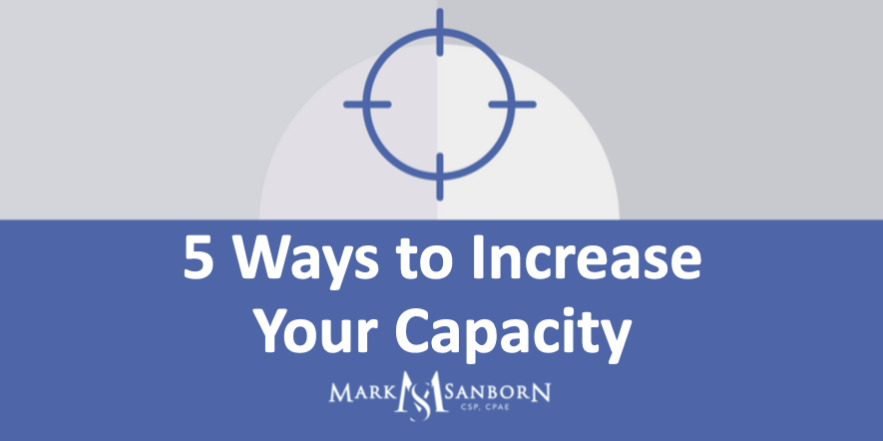Working more hours to get more done is the downfall of most failed leaders.
This problem is due to a lack of capacity. Capacity is the amount that something or someone can produce.
When someone moves into leadership, they typically have more responsibility. If they don’t increase their capacity per hour, they will by necessity have to work longer hours.
If over time a leader can increase his or her capacity–produce more results in a given period of time–they will not only succeed but potentially free up time to pursue new projects and revenue streams.
Here are five ways to increase your capacity:
Education. Think of education as what you know that can be translated into skill. Knowledge is information understood. Education is information applied.
Not only does learning new things increase your capacity, it can also decrease stress and anxiety. In 2020 financial researchers found that even pre-pandemic, a low level of financial literacy was a top contributor to financial stress and anxiety. Learning how to understand and manage their finances made people less anxious.
In my book, Always Win, I suggest “first ask who before how.” Rather than trying to figure out how to do something, determine who already has that skill that you can learn from or collaborate with.
And here is a great resource for lifelong learners from my friend Eva Keiffenheim.
Delegation. Good delegators pick the best people to do the right jobs. Doing it yourself isn’t a luxury leaders can afford.
Effective leaders know that delegation isn’t about finding someone who can do a task better than you (but of course, if you can, that’s great), but finding someone who can do the task well enough.
For example: If you have an important message, you can draft the key points and delegate at least the proofreading, or at most the development of those key points into a message, to someone who is a good communicator.
Collaboration. In this insightful article, collaboration is defined as working together to create something new.
Done right, collaboration increases results. Done poorly, it wastes time and resources. Of all the ways to increase capacity, this is the most challenging.
A good collaborator has complementary skill sets, good communication skills and a desire to work together. The best collaborators inspire each other and discover ideas that neither would have by her- or himself. And that’s where the “something new” is created, whether a process, product or service.
Cooperation. The article referenced above defines cooperation as working together for mutual benefit.
A shared agenda with everyone working together is the foundation of cooperation. Everyone knows what needs to be done and is willing to do it. Cooperation done right is about removing resistance and obstacles, sharing the work and supporting and encouraging each other.
Innovation. Whether done alone or with others, innovation is figuring out new ways to do old things or new ways to do new things. Innovation can be as simple as improvements in processes and as radical as a paradigm-changing discovery.
One key is to ask “how has it always been done?” and challenge the answer. Many years ago Seth Godin coined the term “stuck winning model.” We do what works, and sometimes keep doing it even after it stops working as well. Innovators are perpetual challengers of the status quo.
To increase your capacity in the months ahead, ask these questions:
What do I need to learn or learn better?
To whom on my team can I delegate and what are their greatest strengths and abilities?
Who is a potential collaborator?
Who are the people whose cooperation would most increase my capacity?
What might I do better or differently in my efforts going forward?
And here’s a bonus: what could I stop doing that wouldn’t make a big difference? Sometimes increasing capacity isn’t just about doing more in the same amount of time, but also about not doing things that really don’t matter.
Mark Sanborn is an award winning speaker and Leadership Expert in Residence at High Point University, the Premier Life Skills University. For more information about his work, visit www.marksanborn.com.








